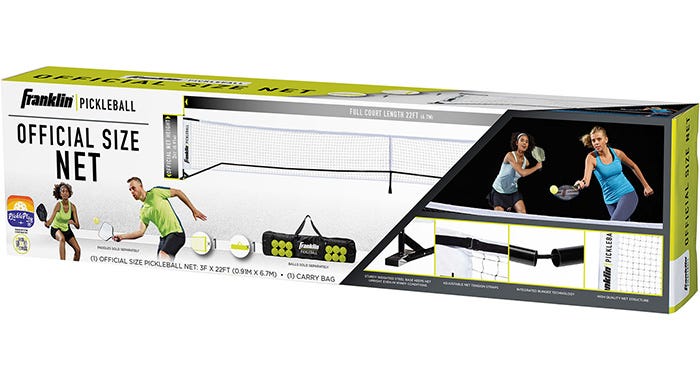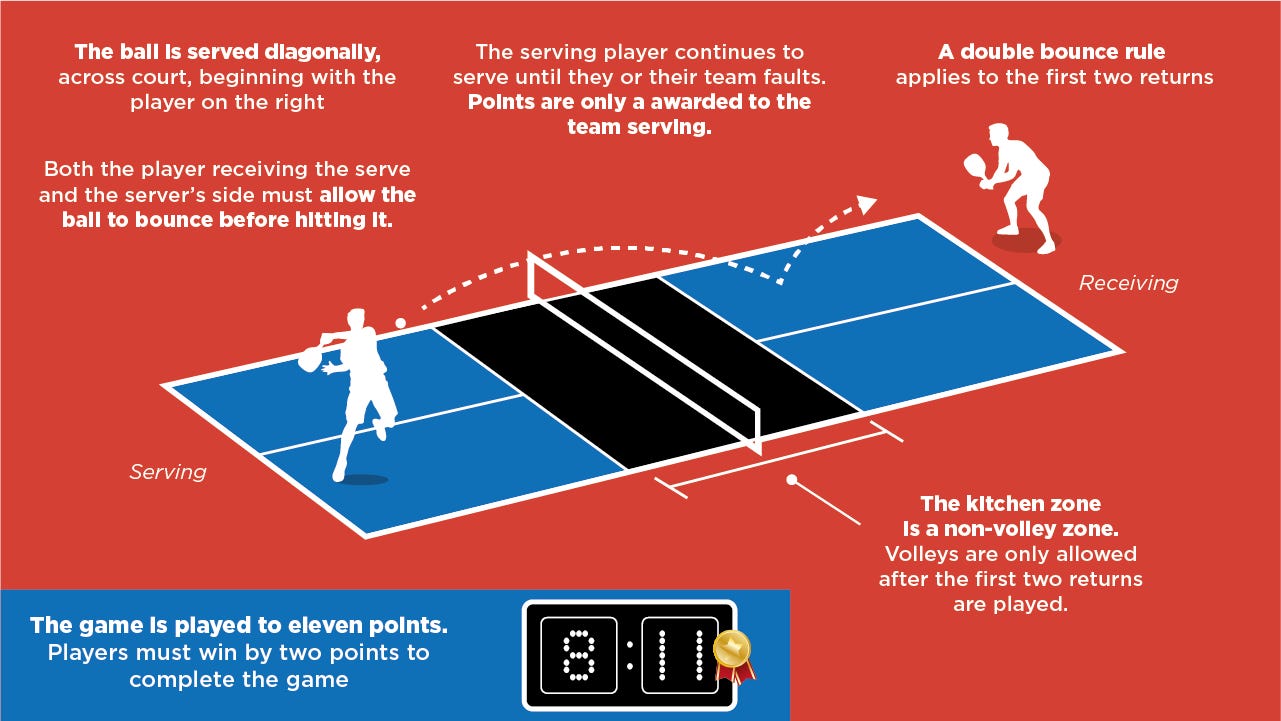New to SkateHut: Pickleball
History of PickleBall
In 1965, on Bainbridge Island, Washington, a trio of neighbours consisting of Joel Pritchard, Bill Bell, and Barney McCallum crafted what would become known as pickleball. Their original intention was to find a way to entertain their restless children on a rainy day, leading them to fashion a game using outdated Ping-Pong paddles and a perforated ball, all on a badminton court.
However, Barney McCallum, the sole surviving creator of pickleball at the time (he passed away in 2019 at the age of 93), revealed in a 2015 interview with the Pickleball Channel that the sport quickly transitioned into an activity predominantly enjoyed by adults.
What is Pickleball
Pickleball, a unique sport that melds elements from badminton, tennis, and ping pong, is gaining popularity due to its accessibility and distinct features. This game unfolds on a court with dimensions mirroring those of a badminton doubles court, while its net, though resembling a tennis net, sits slightly lower. Players wield solid "paddles" and employ a hard, hollow plastic ball with perforations.
What sets pickleball apart from tennis are the crucial differentiators, especially appealing to children and seniors. The most significant divergence lies in the ball's velocity; a pickleball travels at roughly one-third the speed of a typical tennis ball. Additionally, the court occupies less than one-third of the total area of a tennis court. This reduced surface area, coupled with the slower ball speed and the use of underhand serves, renders pickleball a more approachable and enjoyable game, particularly for those looking for a less intense sporting experience.

How to play
Court Dimensions:
Pickleball can be played both indoors and outdoors on a rectangular court that is 20 feet wide and 44 feet long for doubles, and 20 feet wide and 22 feet long for singles. There is a non-volley zone (the "kitchen") extending 7 feet from the net on each side.
Net Height:
The net is positioned at a height of 36 inches (91 cm) at the sidelines and 34 inches (86 cm) at the centre.
Scoring:
Pickleball employs a rally scoring system, allowing either the serving or receiving team to earn points. A typical game concludes when one team reaches 11 points, but there's a requirement to secure victory with a lead of at least 2 points. In tournament settings, a best-of-three-games format is often adopted, with each game aiming for the 11-point mark to determine the ultimate winner.
Serving:
Serving in pickleball adheres to several key rules. Firstly, the serve must be executed underhand. The server takes their position behind the baseline and delivers the ball diagonally, targeting the opposing service box on the opposite diagonal. During the serve, both feet must remain behind the baseline, and contact between the paddle and the ball should occur below the waist. Importantly, the ball must successfully clear the net and land within the service box located on the opposite diagonal. After each point, whether won by the serving or receiving team, there is a switch in serving responsibilities – a serving team continues to serve if they win the point, whereas if the receiving team prevails, they assume the serving role.
Double Bounce Rule:
Following the serve, a pivotal aspect of pickleball is that both teams must allow the ball to bounce once before attempting to strike it. After these initial bounces, players have the option to either volley the ball, meaning they can hit it while it's still in the air, or they can choose to play it off the bounce. Additionally, there's a specific area known as the Volley Zone, or Non-Volley Zone, extending 7 feet from the net on each side of the court. When positioned in this zone, players are prohibited from volleying the ball, meaning they cannot hit it in the air. However, it's permissible to enter this zone to play a ball that has already bounced, provided that both feet are entirely behind the Non-Volley Zone line during the strike. This rule ensures an engaging and strategic dimension to the game.
Faults:
Common faults include hitting the ball out of bounds, hitting the net with the ball or paddle, stepping into the non-volley zone and volleying the ball, and serving out of turn.
A side loses a point if they commit a fault.
Service Order:
In the context of doubles play in pickleball, the initial serve begins from the right-hand court, and subsequently, their partner takes the next serve from the left-hand court. Furthermore, in the receiving team, there's a rotational dynamic in place as well, where the players take turns receiving the serve. This alternating pattern in both serving and receiving ensures fairness and equal participation among all players on the court.
Let Serve:
In pickleball, when a served ball makes contact with the net but still manages to land within the correct service box, it's referred to as a "let." In such cases, no penalty is imposed, and the point is simply replayed. This rule acknowledges the element of chance involved when the net is involved in the serve, ensuring fairness in the game.
Rotation:
In doubles pickleball, there's a systematic rotation that takes place. After each side-out, which occurs when the serving team loses a point, the players switch sides on the court. This ensures an equitable distribution of play and opportunities. Moreover, the player positioned on the right-hand side of the court takes up the role of the initial server in the subsequent sequence. This rotation enhances the balance and competitiveness of the game.


